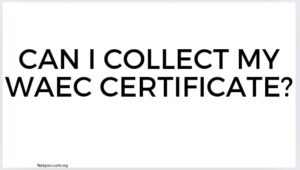West African Examinations Council (WAEC) examinations are a pivotal step in the academic journey of students in West Africa, determining their eligibility for higher education and professional opportunities. This comprehensive guide delves into the meticulous process of Who marks WAEC paper, shedding light on the qualifications of the markers, the steps involved in the marking process, and the quality assurance measures that ensure the reliability and fairness of the results.
The Selection and Qualification of WAEC Markers
Who marks WAEC paper?
WAEC markers are typically experienced educators who are currently teaching the subjects they are assigned to mark. These individuals are usually required to have a minimum of a bachelor’s degree in their respective fields, along with several years of teaching experience at the secondary school level. The selection process is rigorous, involving a thorough review of their educational background and teaching experience to ensure that only the most qualified candidates are chosen.
Training and Standardization
Before the marking commences, all selected markers undergo a compulsory training program. This training is designed to familiarize them with the marking scheme and to standardize the marking process across all subjects and regions. The training includes:
- Detailed reviews of the marking scheme
- Mock marking sessions
- Discussions on common pitfalls and how to avoid them
This ensures that all markers are equally prepared and maintain a consistent standard of marking.
The Marking Process
Initial Marking
Once the examinations are completed, the collected papers are transported to various centralized marking centers. Each marker is assigned a specific number of scripts, and they begin the detailed task of marking each script according to the preset marking scheme. Markers are encouraged to maintain objectivity and to mark each paper on its own merits.
Cross-Checking and Moderation
To ensure fairness and accuracy, a second marker independently reviews a random selection of scripts. This process of moderation helps to identify any discrepancies in the initial markings. If discrepancies are found, the scripts are re-evaluated and the marks are adjusted accordingly.
Quality Assurance and Result Compilation
Monitoring and Evaluation
Senior examiners oversee the marking process at each center. They conduct periodic checks to ensure that all markers are adhering to the marking guidelines. These supervisors also provide ongoing feedback and support to markers during the marking period.
Finalization of Results
After the marking process is completed, the results are compiled and analyzed statistically to ensure consistency across different test centers and regions. This analysis helps to identify any anomalies or deviations in the marking process, which can then be addressed before the final results are released.
Conclusion
Who marks WAEC paper is complex and involves multiple layers of checks and balances to ensure that the results are fair and accurate. The selection of qualified markers, rigorous training, and thorough quality assurance measures all contribute to the credibility and reliability of WAEC examinations. By maintaining high standards throughout the marking process, WAEC continues to uphold its reputation as a benchmark for academic excellence in West Africa.



















+ There are no comments
Add yours